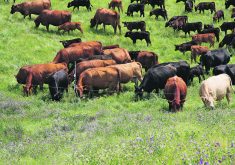Lentil price; CAIS statistic; Power lines; Farrier rules; No mediocrity; Supporting trade
Lentil price
In response to Sandra Yonge’s letter on lentil prices (Open Forum, May 28), I would like to provide our side of the story.
When the Yonges delivered their contracted load of laird lentils to All Commodities, we advised them immediately it was an X3 grade before we unloaded it.
We gave them the option to take the product back or have us dump the product and send the sample off for grading.
Read Also

Budget seen as fairly solid, but worrying cracks appear
The reaction from the agriculture industry to prime minister Mark Carney’s first budget handed down November 4th has been largely positive.
If the grade result came back a No. 2, they would get the No. 2 contract price. If the result came back less than a No. 2, they would be paid 23 cents. They accepted this proposal.
Fortunately, the plant where the product went, Southland Pulse, happened to have an SGS inspector on site for product we were exporting that day. The plant manager, Shawn Madsen, suggested we have the on-site SGS representative do an official probing of the Yonge product.
We thought this was a great idea as we felt this would be the fairest and most accurate way to get a result and leave no room for doubt.
The official probe was sent to SGS by the SGS inspector and they actually graded it lower than an X3, calling it a No. 3.
The Yonges were informed of this and despite the fact it graded lower than 3, they were still paid 23 cents while the spot price for No. 3 was 18 cents at the time.
So, we did have an official inspection done, which is what Mrs. Yonge is pushing for in her letter, which could not have been any more accurate or have any room for doubt.
We did not probe and deliver the sample to SGS. SGS did that themselves. And so there is no confusion between SGS and CGC, SGS grades as per CGC standards and is an international company that specializes in grading. They are just as reputable and trusted as the CGC. …
All three companies, who are all reputable, all graded the product an X3. So to all producers out there, based on these facts, we will let you draw your own conclusions.
– Kevin Dick,
President,
All Commodities Trading Ltd.,
Winnipeg, Man.
CAIS statistic
This is a plea to anyone who might be able to help us.
We are a CAIS statistic. We were encouraged by our bank to apply for the Net Income Stabilization Account, which was being converted to Canadian Agricultural Income Stabilization after a very severe kick in the stomach and pocketbook after the BSE fiasco.
We were also hit hard with a drought problem.
In the years 2003-04 to last year, we have had to purchase up to 110 tons of hay a year.
The money to buy this feed was mostly loaned to us by our bank. Some money we did receive from CAIS.
Last year my husband and I both received letters … (which) said that the money we received was an overpayment and we had to return it all.
At first we had to repay it by January 2009 and now supposedly we have until January 2010 before any interest has to be paid.
Surprise, a letter comes (May 15). It states if (they) do not receive full payment or have not been contacted to arrange repayment by June 10, our file may be forwarded to a private collection agency or (they) may purse legal action. We have been sending small amounts monthly but they obviously don’t have any record of this attempt to repay this debt. …
Ranching is not just a business, it is a proud way of life but it seems our governments are doing their best to stomp out smaller farmers or ranchers (50-200 head) but are able to give big cash bailouts to their big company friends.
– Shirley M. Daigle,
100 Mile House, B.C.
Power lines
I recently read an article in your paper regarding a new program that SaskPower is starting up (“SaskPower helps remove overhead danger,” WP, May 21.)
One of them is called the Farmyard Power Line Relocation Program. I think you better do some more investigating because when I called them, they are not burying power lines in the farmyards, only the lines from the mainline going into your farmyard.
I have many lines in my yard to my house, barn, shop and granaries and would love to bury them. I was told by a SaskPower representative that it is my responsibility to bury them and not SaskPower.
Since these lines have been in my yard for probably the last 50 years or more, my guess is that my ancestors did not put them up. SaskPower probably did.
So why is it now my responsibility to bury them, and at my own expense, when they are advertising a program that says they will do it.
It amazes me how they can charge us for the power they provide through their lines, record a profit of $63 million in 2008, but don’t seem to want to do the maintenance or in this case, provide a safe environment for all Saskatchewan farm families through a program that in my mind is misleading and false advertising.
Shame on you SaskPower.
– Shelly Kuypers,
Paradise Hill, Sask.
Farrier rules
In reply to Donna O’Neil’s letter in the May 21 issue regarding farriers, I say good for you. You’ve said it like it is.
My husband has been a farrier for 40 years, and you are right, he is a horseman first and foremost. He shoes Standardbred racehorses on which balance and levels are all important.
He spends time on the rail watching horses he shod to be sure they are pacing properly and not hitting themselves. If certification or licensing became mandatory, he would stop shoeing.
He would tell you he doesn’t need the hassle, as would many of the veteran shoers.
– Leinita Woods,
Ashville, Man.
No mediocrity
On the front page of the June 4 Western Producer, Maureen Fitz-henry said producers are aware that it is rare for the board to accept 100 percent of the contracted durum.
When I plant my crop, I expect to sell 100 percent of it within at least 11 months of harvesting, regardless of what crop it is. I also expect a higher price than U.S. producers receive because of the single desk.
Canola growers in Canada extract a higher price than Americans without a marketing board. Anyone who believes Canadian farmers should expect less than 100 percent is part of the problem and not part of the solution.
I can’t accept mediocrity. I wish monopoly supporters and the CWB wouldn’t either.
– Clayton Kotylak,
Montmartre, Sask.
Supporting trade
Re: “Trade deals slow to gain gov’t approval,”(WP, May 28.)
Canada’s free trade agreements with Colombia and Peru are vitally important for Canadian farm families and our Conservative government is working hard to put these deals in play as soon as possible.
The headline on the May 28 Western Producer story about those free trade agreements gives the impression there have been delays on the government side.I’d like to correct the record.
The simple fact is that our Conservative government is ready and willing to pass the free trade agreements with Colombia and Peru immediately.
Conservatives are pushing hard to get these agreements through the House of Commons because the Colombian and Peruvian markets are vital for Canadian farmers.
The Canadian Wheat Board sells $230 million in wheat and barley to these markets.
Pulse Canada reports that our farmers export another $100 million in pulse and specialty crops.
Unfortunately, the NDP are putting farmers’ livelihoods at risk by leading opposition to these agreements while the Liberals can’t decide which side they’re on.
They are ignoring the CWB, Pulse Canada and other farm groups that are clearly calling for quick passage of these vital agreements.
If the NDP and Liberals want to support rural Canada, they need to listen to farmers and follow our Conservative government’s lead to pass the free trade agreements with Colombia and Peru.
– Hon. Gerry Ritz,
Minister of Agriculture and Minister for the Canadian Wheat Board,
Ottawa, Ont.














